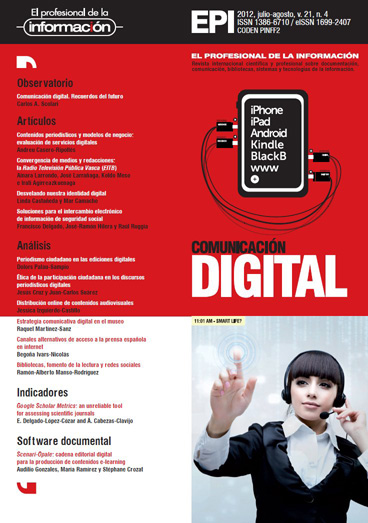Aggregate ranking of Spain´s universities in the Shanghai Ranking (ARWU): Effect on autonomous communities and campuses of international excellence
DOI:
https://doi.org/10.3145/epi.2012.jul.16Keywords:
University rankings, Shanghai Ranking, ARWU, International excellence campus, Scientific policy, Spain, Higher education, Bibliometrics indicators.Abstract
The Academic Ranking of World Universities (ARWU) or Shanghai Ranking is a de facto standard to determine the position of universities worldwide. Improving ranking positions has become the goal of universities and governments. No wonder therefore that the aggregation of universities in Spain is nowadays suggested as a means to raise the international profile of our university system. In this context, the goal of this study was to test two potential groupings, universities belongingto the same Autonomous Community and campuses of international excellence (CEIs), to determine the ARWU placement that would result. To compute the ARWU indicators of these possible groupings, we used the methodology developed in Docampo (2012b). The results of our analysis clearly show the difficulty of improving ranking positions by calculating the sum of aggregated institutions. As a matter of fact, the only way to place a university cluster from Spain in the top 100 would be to treat all of the Catalan universities as a single institution. The next best ranking for Spain would be achieved by the Habitat 5U (universities of Comunidad Valenciana), BKC (Barcelona and Politècnica de Catalunya) and VLC/Campus (Valencia and Politécnica de Valencia), CEIs which would lie in the 150-200 range.
Downloads
Downloads
Published
How to Cite
Issue
Section
License
Dissemination conditions of the articles once they are published
Authors can freely disseminate their articles on websites, social networks and repositories
However, the following conditions must be respected:
- Only the editorial version should be made public. Please do not publish preprints, postprints or proofs.
- Along with this copy, a specific mention of the publication in which the text has appeared must be included, also adding a clickable link to the URL: http://www.profesionaldelainformacion.com
- Only the final editorial version should be made public. Please do not publish preprints, postprints or proofs.
- Along with that copy, a specific mention of the publication in which the text has appeared must be included, also adding a clickable link to the URL: http://revista.profesionaldelainformacion.com
Profesional de la información journal offers the articles in open access with a Creative Commons BY license.




